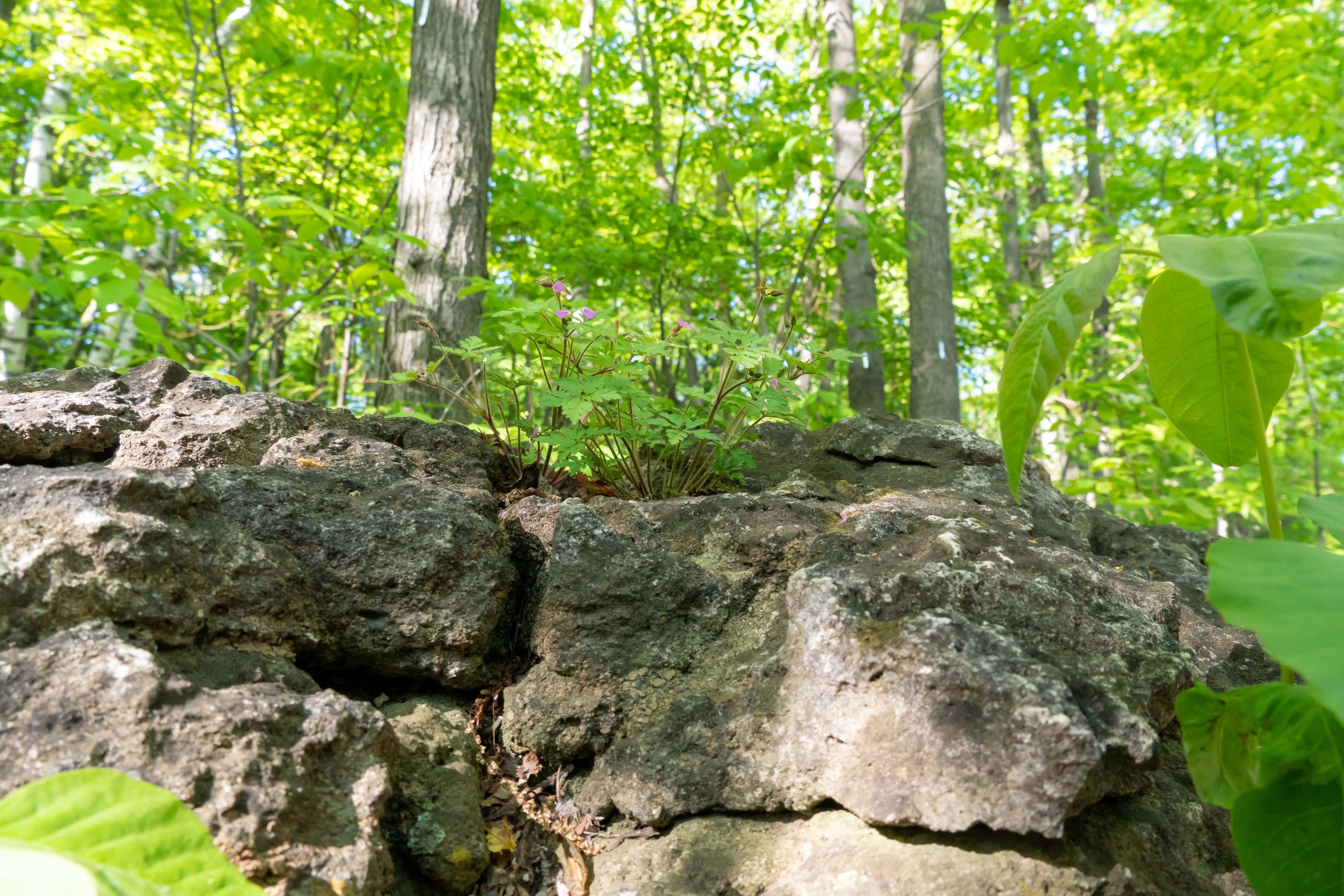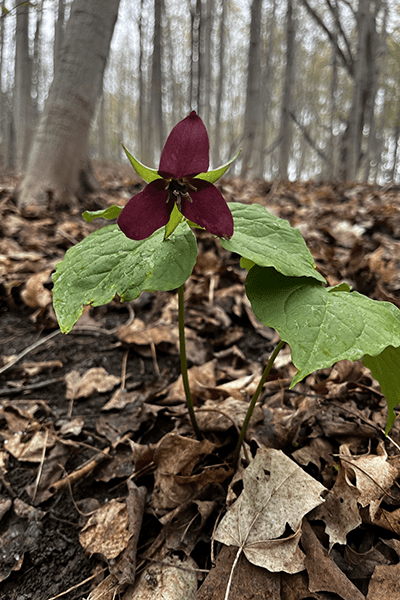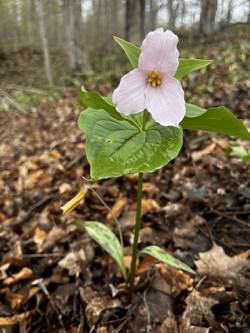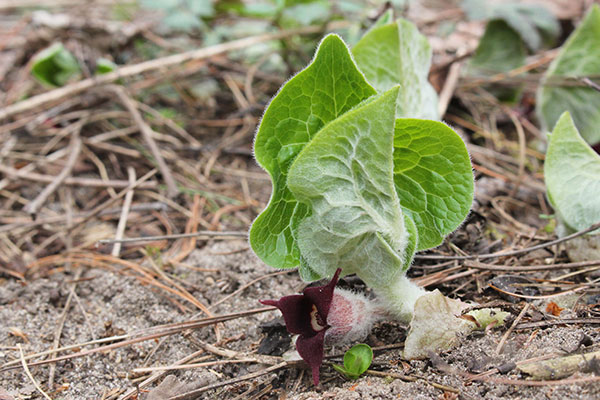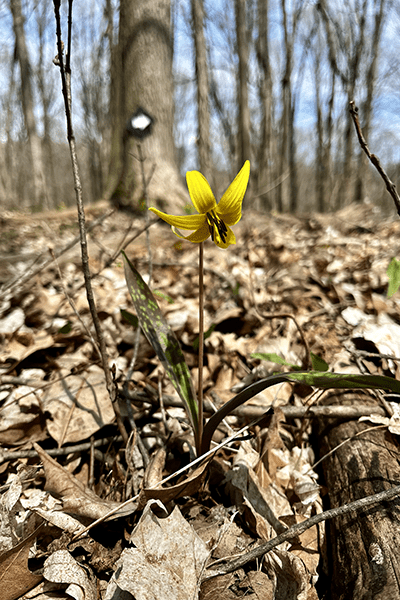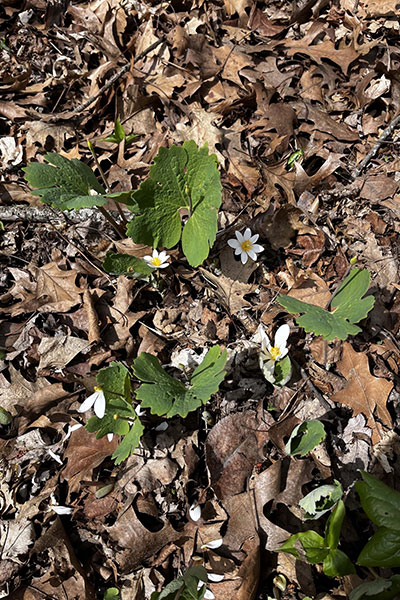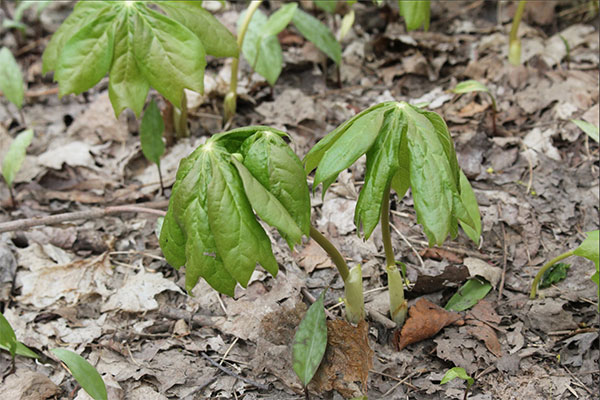Submitted by Kari Moreland, professor of Biology in Fanshawe’s School of Language and Liberal Studies.
Do you like nature?
I do. Or at least, I think I do. I have always said that I’m an “outdoorsy” person. I love hiking, canoeing, mountain biking, camping. All the outdoorsy things!
And yet, a few years ago when I started taking my kids out for hikes, I began to realize how disconnected from nature I really was.
We were walking through the forest and my kids spotted a beautiful tree with unique foliage. “What’s that?!”
Me: “A tree”.
Kids: “What kind of tree?”
Me: “A green one.” That’s all I could give them.
Later, we heard the melodious call of a bird overhead.
Kids: “What’s that?”
Me: “A bird.” Again, that’s all I could give them.
For an “outdoorsy” person, I was sure failing at knowing what actually lived in the outdoors.
Finally, we hear something I recognize.
Kids: “What’s that?”
Me: “A firetruck siren.” Nailed it.
I’m sure I’m not the only one in this situation. We can’t recognize the sights and sounds of nature but can identify the melodious ringtone of an iPhone.
This lack of familiarity with the natural environment can lead to a sense of disconnection from the ecosystems that support us and the diverse life forms that share our planet. Learning about the biodiversity around us can bring joy and a deeper appreciation for the natural world that exists beyond our daily routines.
So, let’s take a few minutes to learn about biodiversity and start to reconnect with nature.
What is Biodiversity?
Biodiversity describes the variety of life on earth, from the smallest microorganisms to the largest animals and plants. It encompasses the diversity of species, genetic variation within species and the variety of ecosystems that support life. As humans, we rely directly on these ecosystems to provide us with food, lumber and even medicines. On top of that, these diverse ecosystems clean our water, filter our air and pollinate our crops. We use them for recreation to get out hiking, swimming or camping. We even rely on them to help boost our mental health. Getting out in nature helps to reduce cortisol, improve stress management and regulate our nervous system. Despite its importance, we are in the midst of a biodiversity crisis. Human activities such as deforestation, overexploitation of resources, pollution and climate change are causing species extinction rates to accelerate. This loss of biodiversity not only diminishes the beauty of our planet but also weakens the very systems that sustain human life.
But what can we do to help?
The first thing to do is to reconnect with nature.
How to Reconnect with Nature
Get outside. Be observant. Learn about the diversity around you. One way to do that is by using iNaturalist, an app where you can upload photos of the different species you see in nature, and it will help identify what the species is. The community of iNaturalist users will then verify the observation to ensure that it is correct. By using iNaturalist, you learn more about your local biodiversity, but you also contribute to conservation through community science. By documenting observations of plants, animals, and other organisms in the wild, you provide crucial data on species distribution, including the spread of invasive species. iNaturalist data can be used as an early detection tool to find new invasive species early enough to allow conservationists to then step in and prevent the invasives from getting established.
In Southwestern Ontario, we are truly fortunate to be situated within the Carolinian Zone, the most diverse ecoregion of Canada. The Carolinian Zone, characterized by its mild climate and diverse ecosystems, is home to a remarkable variety of plant and animal species found nowhere else in the country.
Local Biodiversity in Southwestern Ontario
Here are a few interesting species that you can spot in our communities right now:
Trilliums, Ontario's official flower
We have red trilliums and white trilliums but don’t be confused when you spot pink trilliums too! White trilliums change colour as they age, transitioning from white to pink.
Trilliums have an interesting relationship with ants based on a mutualistic interaction. Trilliums produce seeds that have a fleshy structure called an elaiosome, which is rich in lipids and proteins. When trillium seeds ripen and fall to the ground, ants are attracted to the elaiosomes and carry the seeds back to their underground nests. The ants get food and the trilliums get their seeds dispersed!
Skunk cabbage
Skunk cabbage is one of the first flowers that you see emerge in the spring! One of the most intriguing aspects of skunk cabbage is its ability to metabolize stored carbohydrates to generate heat. This process, called thermogenesis, allows the plant to melt snow around it in early spring which helps it emerge and bloom even when the air temperature is still cold.
Trout lily
The trout lily is named for its mottled leaves that resemble the markings of a trout. Although commonly seen around London, it actually takes several years for these plants to mature enough to bloom.
Bloodroot
Bloodroot derives its name from the red sap found in its roots, which was historically used as a natural dye.
Mayapple
Mayapple produces umbrella-like leaves and fruits that resemble miniature apples. The “Mayapple apple” is edible when fully ripe, but unripe fruit and other parts of the plant are toxic.
Support Biodiversity in Southwestern Ontario
If you’d like to learn more about nature, consider signing up for the City Nature Challenge! The City Nature Challenge is a global competition in which cities compete to make the most observations on iNaturalist from April 26 to 29. You can get outside and make iNaturalist observations on your own or you can register to attend a nature walk where you can learn from a knowledgeable naturalist.


